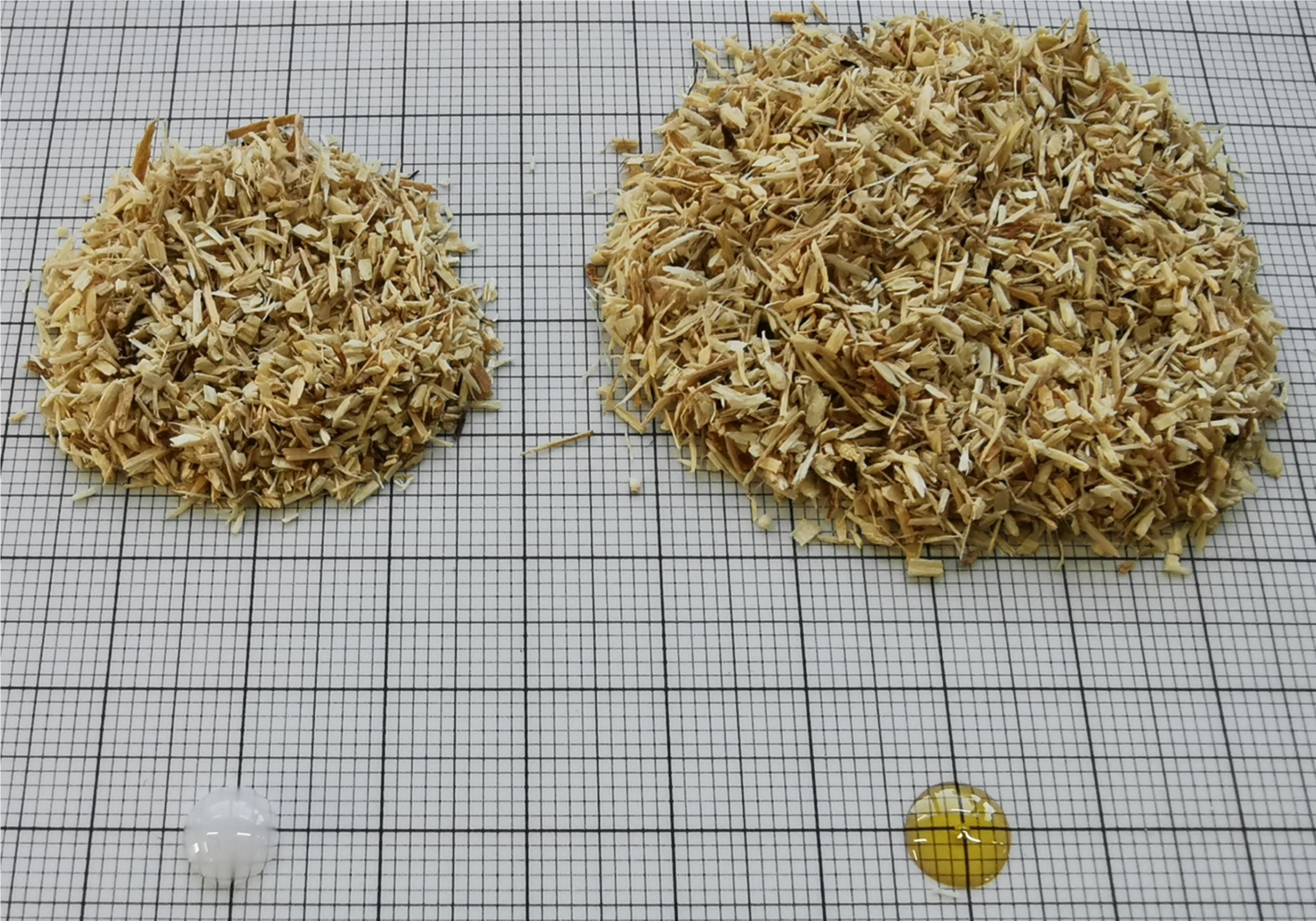Research Summary Report A08
Structural Timber by Individual Layer Fabrication (ILF)
[22.01.2021]
Bunzel, Frauke; Project leader; frauke.bunzel@wki.fraunhofer.de
Asshoff, Carsten; Doctoral researcher; carsten.asshoff@wki.fraunhofer.de
Fraunhofer Institute for Wood Research
Wilhelm-Klauditz-Institut WKI
In order to produce future-oriented timber structures in the building industry that meet the requirements of ecological and economic sustainability, an additive manufacturing process with wood chips is being developed using the new approach of individual layer fabrication (ILF). In first steps, established wood chip fractions and adhesive systems from the wood-based materials industry are used e. g. for particleboards or oriented strand boards.
For an acceptable adhesive-wood-chips ratio the amount of adhesive must be as low as possible, which is one of the challenges in developing ILF, see Fig. 1. In addition to the distribution of the adhesive over the wood chips surface, the intrusion behavior into the bulk is decisive. On the adhesive side, approaches such as reducing the viscosity by emulsifying with water or reducing the surface tension can lead to better processing results. In first steps, the wood chips should remain untreated. However, it is necessary to determine whether one wood chip fraction can be processed better than others. It is known that higher stiffness and strength can be produced by coarser wood chips fractions, which is also considered. The structural performance of the final component is not only determined by the strength and stiffness of the material but also significantly by the geometry of the part.
For the repeatable and automatable application of the adhesive from above onto the wood chips, a pre-selection of potential valves was made. First, the pressure-time, spray- and jet-valves are investigated. Each of the mentioned valves has advantages and disadvantages in the general application technique of liquids. Experiments will be conducted to determine which of the valves offers the best potential for the ILF process by varying materials and application parameters.










